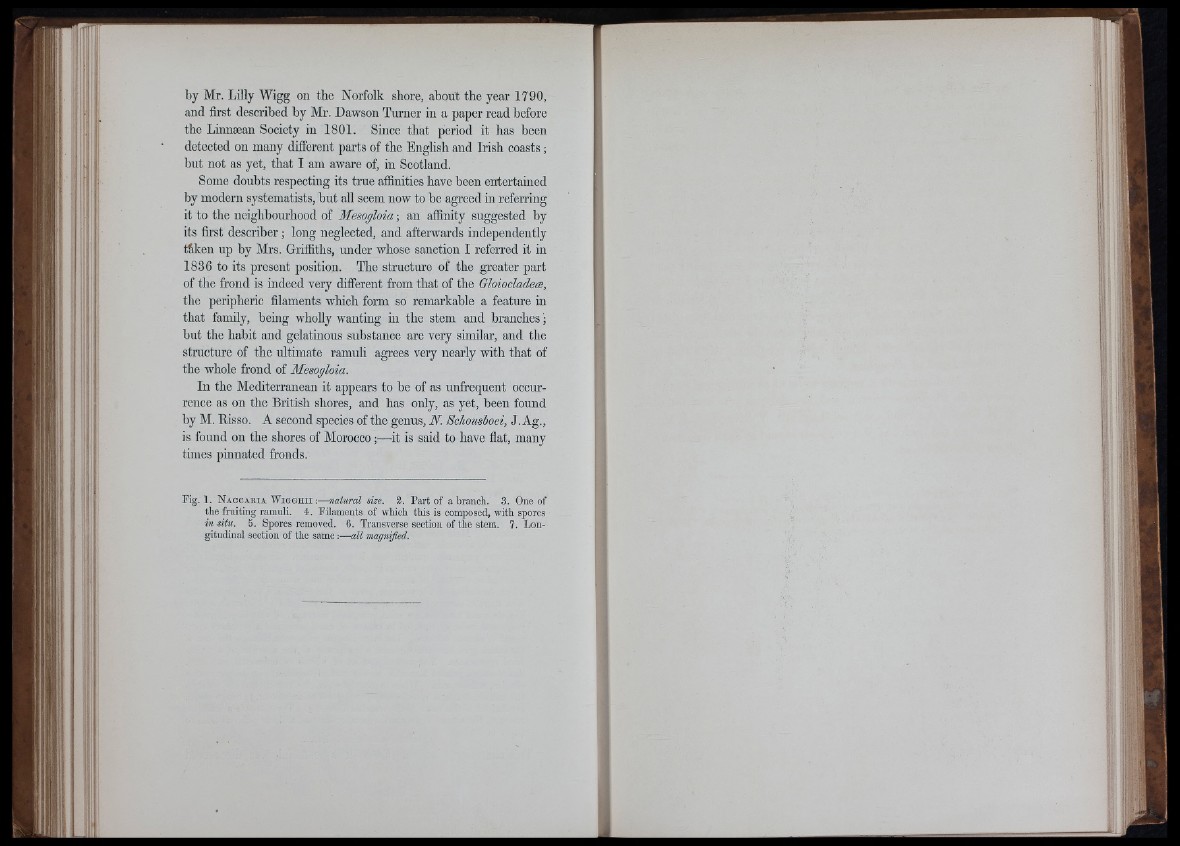
by Mr. Lilly Wigg on the Norfolk shore, about the year 1790,
and first described by Mr. Dawson Turner in a paper read before
the Linnæan Society in 1801. Since that period it has been
detected on many different parts of the English and Irish coasts ;
bnt not as yet, that I am aware of, in Scotland.
Some doubts respecting its true affinities have been entertained
by modern systematists, but all seem now to be agreed in referring
it to the neighbourhood of Mesogloia ; an affinity suggested by
its first describer ; long neglected, and afterwards independently
tfikeii up by Mrs. Griffiths, under whose sanction I referred it in
1836 to its present position. The structure of the greater part
of the frond is indeed very different from that of the Gloiocladeæ,
the peripheric filaments which form so remarkable a feature in
that famüy, being wholly wanting in the stem and branches ;
but the habit and gelatinous substance are very similar, and the
structure of the ultimate ramuli agrees very nearly with that of
the whole frond of Mesogloia.
In the Mediterranean it appears to be of as unfrequent occurrence
as on the British shores, and has only, as yet, been found
by M. Risso. A second species of the genus, N. Schousboei, J.Ag.,
is found on the shores of Morocco ;—it is said to have fiat, many
times pinnated fronds.
Fig. 1. N a c o a b i a Wig g h ii :— natural size. 3. Fart of a branch. 3. One of
the fruiting ramuli. 4. Filaments of which tliis is composed, with spores
in situ. 5. Spores removed. 6. Transverse section of the stem. 7. Longitudinal
section of the same :— all magnified.
■il